Hirosaki Cherry Blossom Festival 2025: Castle Park Highlights, Access, and Tips

The famous Hirosaki Cherry Blossom Festival is held every year at Hirosaki Castle Park in Aomori from mid-April until early May. Hirosaki Castle boasts one of the twelve remaining castle towers in Japan. We introduce the 2025 festival highlights, access, and tips.
Hirosaki Castle Park and its Cherry Blossoms
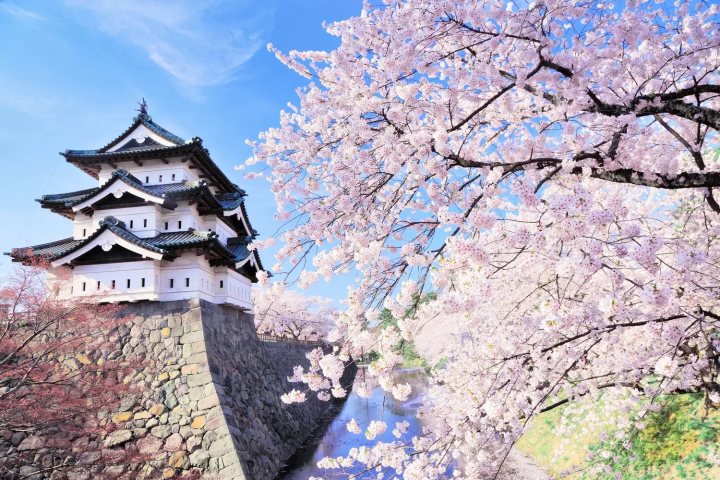
Photo by Pixta
Hirosaki Castle Park is one of the prominent cherry blossom viewing spots in northern Japan. The park is home to around 2,600 cherry blossom trees, which are expected to start blooming from April 15 in 2025.
The annual Hirosaki Cherry Blossom Festival will be held April 18 - April 27, 2025.
Read on to learn more about the highlights of cherry blossom viewing at Hirosaki Castle and its history.
Hirosaki Castle Park: Cherry Blossom Festival and Other Highlights
1. Hirosaki Cherry Blossom Festival 2025
2. Hirosaki Castle History
3. Admission and Operating Hours
4. Hirosaki Castle Highlights
5. How to Get to Hirosaki Castle Park
6. Places to Visit Near Hirosaki Castle
Hirosaki Cherry Blossom Festival 2025
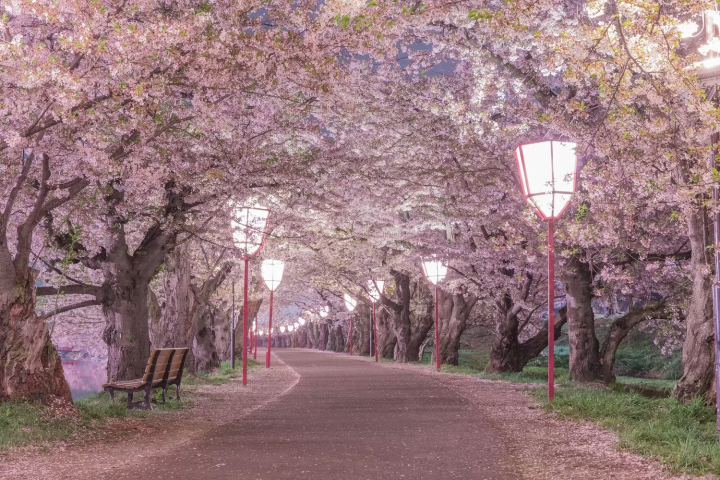
Photo by Pixta
The Hirosaki Cherry Blossom Festival is held every year from mid-April to early May. There are around 50 varieties of cherry blossom trees within the Hirosaki Castle Park.
First to bloom are the Somei Yoshino cherry blossoms, followed by the Shidarezakura (Weeping Cherry), and finally the Yaezakura (Double Layer cherry) will bloom. The cherry blossoms at Hirosaki Castle (Hirosaki Park) are unique as each branch produces more flowering buds than regular trees due to a special pruning technique adopted from apple tree pruning.
Hirosaki Castle Park is known for its many old sakura trees, which are over a century old; a Yoshino cherry tree planted in 1882 is Japan’s oldest cherry tree, and there are 300 more that were planted more than a hundred years ago.
Sakura trees are planted along both sides of the walking path that runs along the western moat. The row of trees is called the “Sakura Tunnel.”
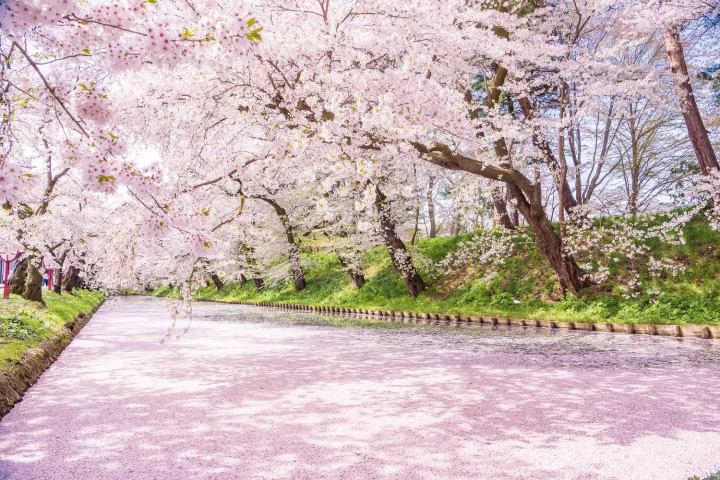
Photo by Pixta
This Hirosaki Cherry Blossom Festival has been chosen as a scenic world spot to visit once in your lifetime. The cherry blossom petal carpet formed on the surface of the moat is one of the special attractions. At night, everything is illuminated! With highlights aplenty, the Hirosaki Cherry Blossom Festival is an event not to be missed.
In 2025, the Somei Yoshino variety of cherry trees are expected to start blooming around April 15 (source: Weathernews) and reach full bloom around April 22. The weeping cherry trees (Beni-shidare zakura) and other varieties are expected to bloom in late April.
Visit the Hirosaki Cherry Blossom Festival website for details: https://sakura.hirosakipark.jp/en
Hirosaki Castle History
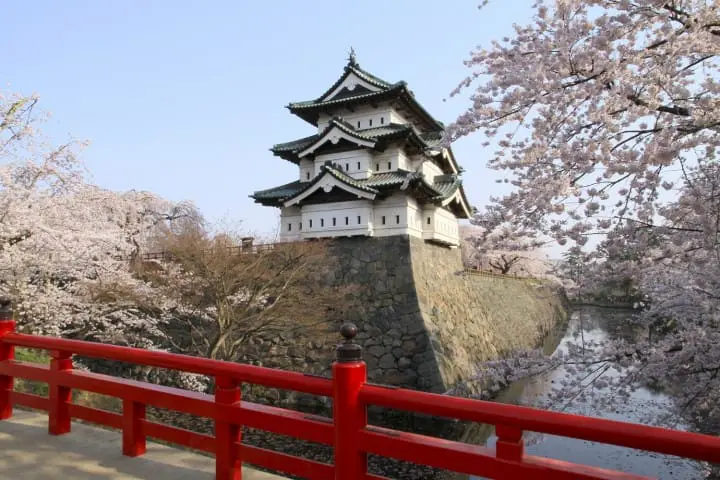
Photo courtesy of Aomori Tourism Federation
Hirosaki Castle is located in Hirosaki City, Aomori. During the Edo period (1603 - 1868), the first castle tower was constructed in 1609 on the orders of Nobuhira Tsugaru, the governor of the region. However, in 1627, a lightning strike ignited a stash of gunpowder inside the castle compound, resulting in a fire that completely destroyed the inner citadel and other structures, including the castle tower.
Following this event, Hirosaki Castle remained without a tower for nearly 200 years until reconstruction commenced in 1810. The current tower is one of twelve extant towers in Japan today and is designated as a National Important Cultural Property.
Situated within Hirosaki Park, Hirosaki Castle also features several watchtowers - Tatsumi (southeast), Hitsujisaru (southwest), and Ushitora (northeast) - each named for traditional cardinal directions. Relative to the castle, each tower is positioned based on its name.
Hirosaki Castle Admission and Operating Hours
Admission to Hirosaki Castle: 320 yen for adults and 100 yen for children (*for the inner citadel and the northern quarter)
Season: 4/1 to 11/23 (closed in the winter from 11/24 to 3/31)
Hours: 9:00 - 17:00 (7:00 - 21:00 during the Hirosaki Park Cherry Blossom Festival)
Hirosaki Castle Highlights
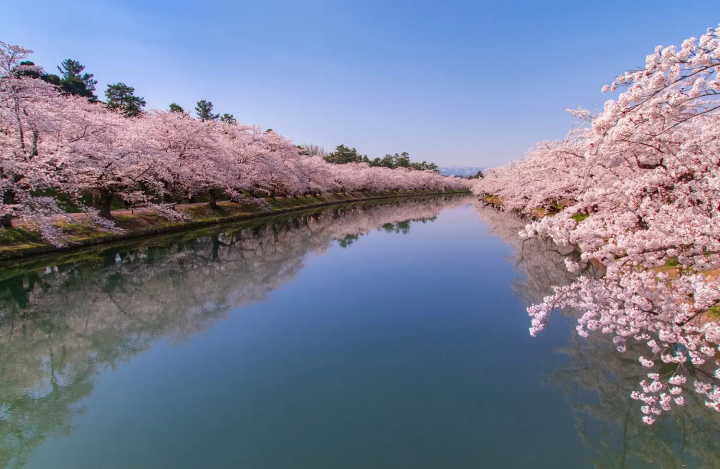
Photo by Pixta
If you’re visiting the castle, the castle park is also worth exploring. Hirosaki Park spans roughly 49 hectares and features the castle, watchtowers, moats, bridges, and playgrounds. The park serves as a focal point for Hirosaki City tourism and events.
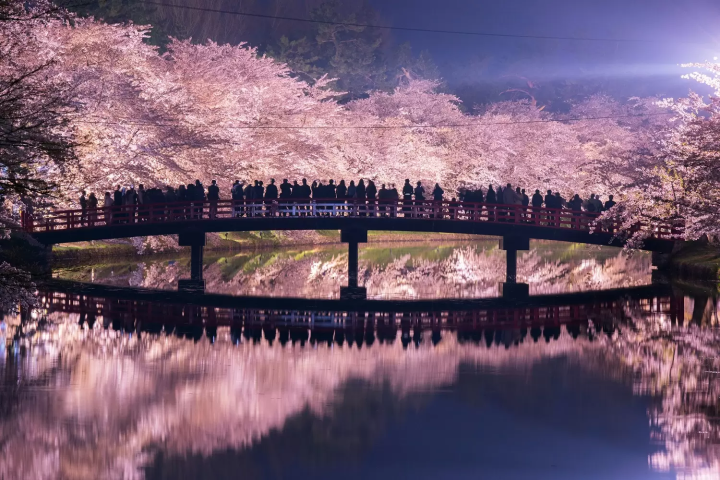
Photo by Pixta
Located nearly at the park's center, Hirosaki Castle is surrounded by five moats: the inner moat, Lotus Pond moat, central moat, western moat, and outer moat. These moats are crossed by a total of nine bridges, including the unique detachable Great Cedar Bridge that could be swiftly dismantled during wartime. Among these bridges is the Gejo (dismount) Bridge, traditionally used by samurai who would dismount after riding across.
While each bridge holds its own charm, the viewpoint from the Gejo Bridge is considered the most breathtaking for admiring Hirosaki Castle's beauty.
How to Get to Hirosaki Castle Park
To reach Hirosaki Castle from Tokyo Station, take the Tohoku Shinkansen to JR Shin-Aomori Station, then transfer to the Limited Express Tsugaru at Ou Station. Disembark at Hirosaki Station. The journey lasts around four hours and costs 17,790 yen.
Upon arrival at Hirosaki Station, board the city loop bus from the station's front and alight at Shiyakusho-mae, followed by a four-minute walk. The bus fare is 100 yen.
Places to Visit Near Hirosaki Castle
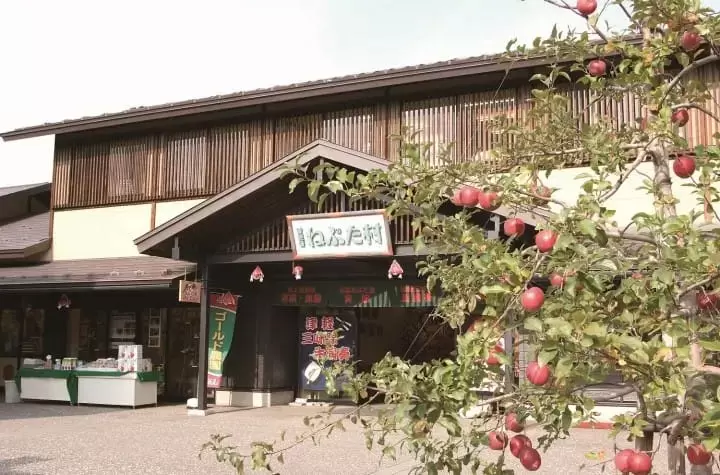
Neputamura. Picture courtesy of the Aomori Tourism Federation
Neputamura is a cultural center located in the northern part of Hirosaki Park. Several corners are set up at Neputamura so that you can enjoy local culture and music. In the Tsugaru-zo Studio, which was once used as a rice granary, you can try out the traditional crafts of the Tsugaru region, like Tsugaru-yaki pottery and Tsugaru printing.
In the Hirosaki Neputa building, you can see Neputa-hayashi and Tsugaru shamisen performances. At Suguri-an, you can watch performers demonstrate how to use suguri, the unique Tsugaru spinning top.
There are also places to eat and buy souvenirs. After visiting Hirosaki Castle, take some time to immerse yourself in Tsugaru’s regional art and music.
Hotels near Hirosaki Castle
大の旅好き。日本はほとんどの都道府県を旅しました。今や世界中の人を魅了してやまない日本。そんな日本の隠れた魅力も伝えていければと思います。





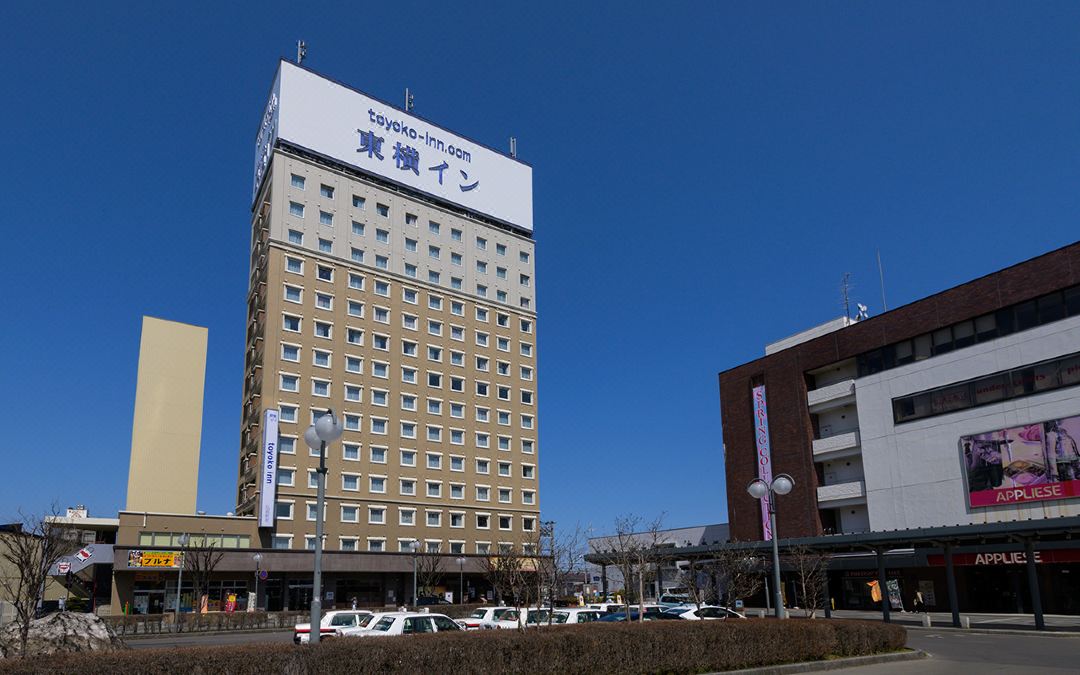
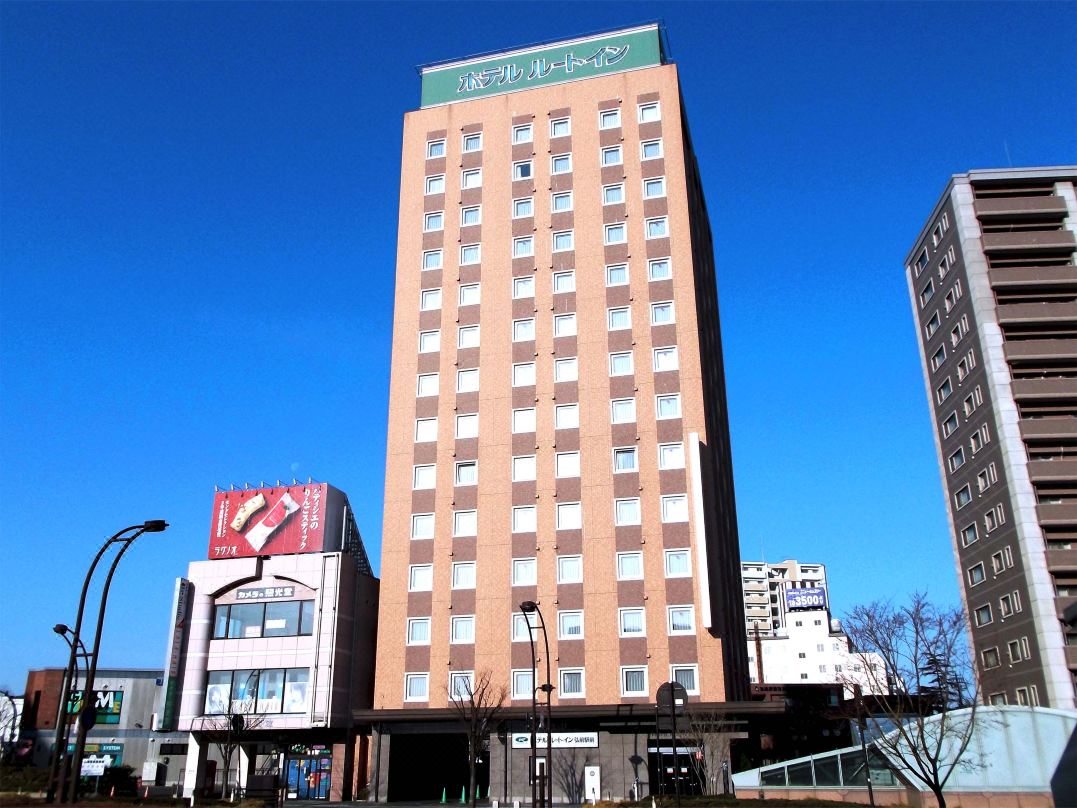



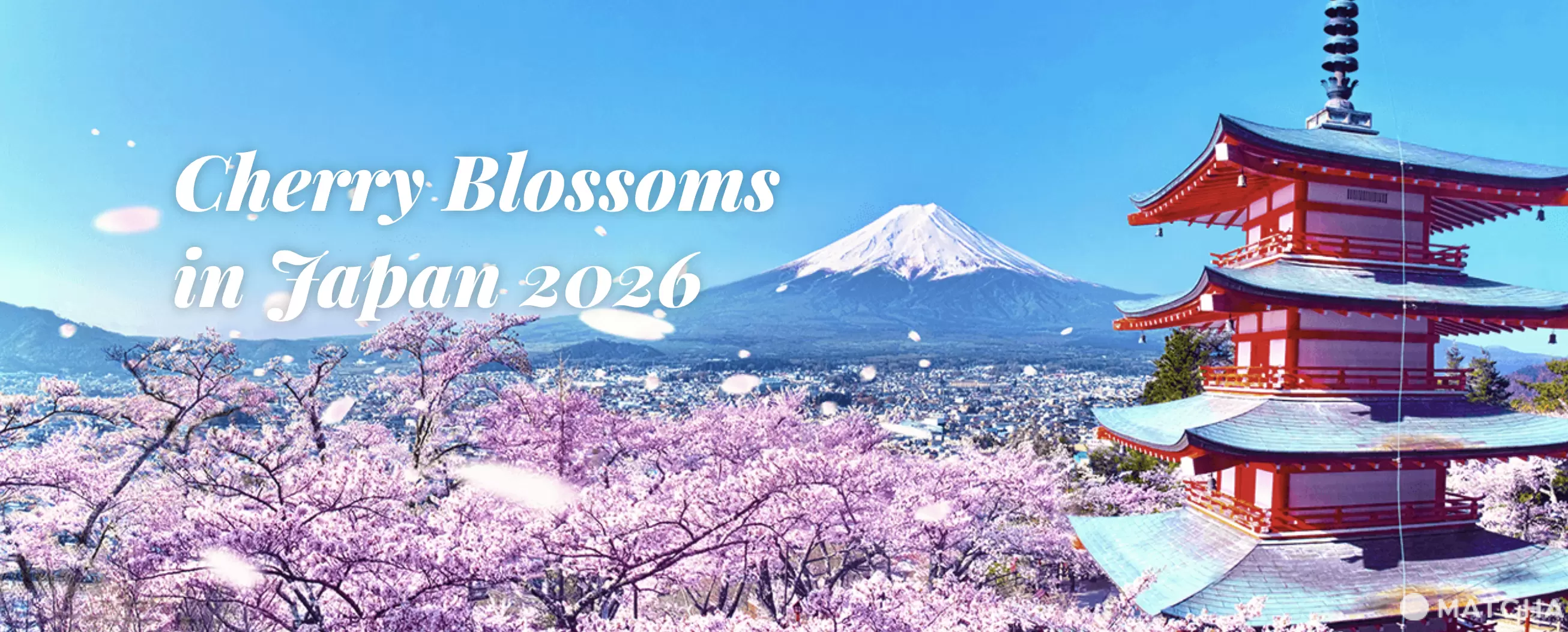
































![[Just a short distance from Nagoya] Popular Taiwanese YouTuber Alan tours Aichi, Tokoname!](https://resources.matcha-jp.com/resize/720x2000/2026/01/08-255181.webp)

